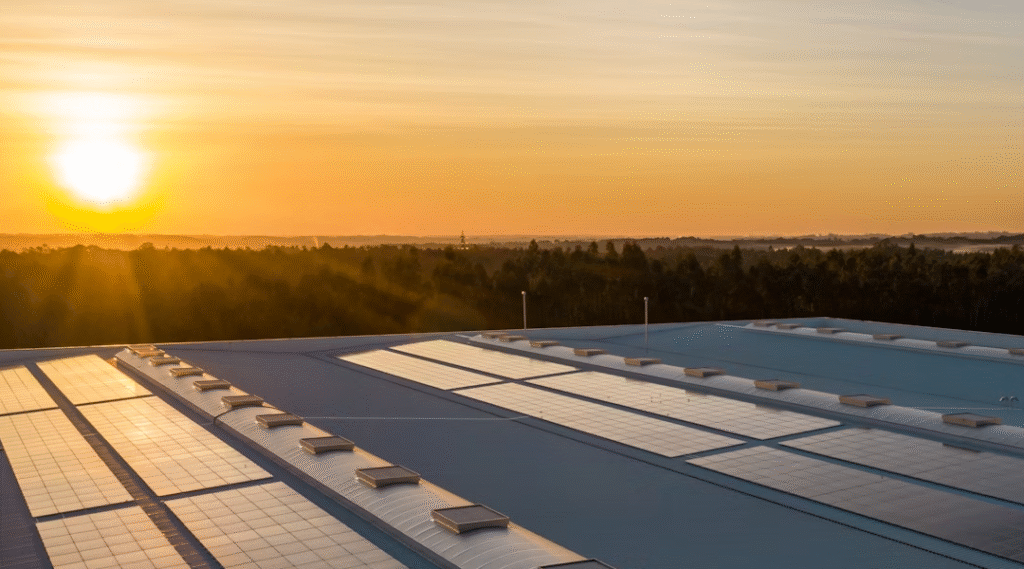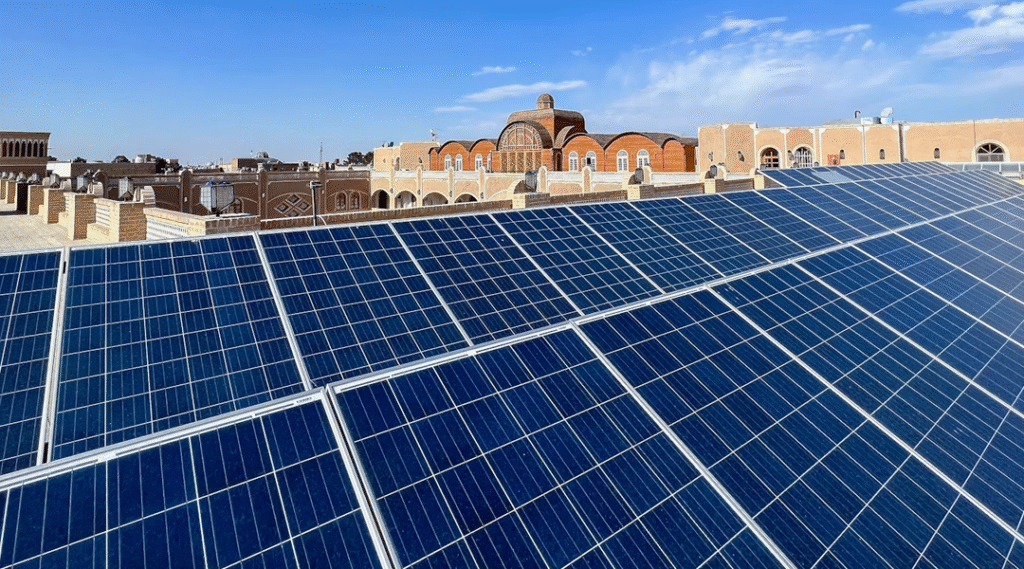As the global energy transition accelerates, traditional renewables like wind and solar are rapidly scaling. Yet to achieve decarbonization targets and stabilize grids under higher renewable penetrations, next‑generation technologies must move from pilot projects to commercial reality. This article explores three transformative pillars—green hydrogen and Power‑to‑X pathways, carbon capture and storage coupled with renewables (CCUS+R), and the digital revolution in clean‑energy asset management through AI, digital twins, and predictive maintenance—and considers how they will reshape the energy landscape over the next decade.
1. Green Hydrogen & Power‑to‑X: Decarbonizing Hard‑to‑Abate Sectors
Green hydrogen—produced by electrolyzing water using renewable electricity—offers a versatile energy carrier with applications across industry, transport, and long‑duration storage. Electrolyzer costs have fallen by 50% since 2015, and the largest projects today exceed 200 MW of capacity. Green hydrogen can decarbonize steelmaking via direct reduction, power heavy‑duty transport fuel cells, and serve as a seasonal storage medium when converted back to power through turbines or fuel cells.
Power‑to‑X (PtX) extends hydrogen’s value chain by synthesizing derivative fuels and chemicals:
- Power‑to‑Gas (PtG): Injecting hydrogen or synthetic methane into gas networks for blending or peak‑shaving.
- Power‑to‑Liquid (PtL): Converting CO₂ and H₂ into e‑fuels like synthetic diesel, jet fuel, and methanol, crucial for aviation and maritime sectors.
- Power‑to‑Chemicals (PtC): Producing ammonia, formic acid, and other building blocks that replace fossil‑derived feedstocks.
Challenges include scaling electrolyzer manufacturing, securing low‑cost renewable electricity, and developing hydrogen transport and storage infrastructure. Nevertheless, government incentives—such as Europe’s Hydrogen Bank—and corporate off‑take agreements are driving capital deployment. Over the next five years, we expect green hydrogen costs to drop below $2/kg in sun‑and‑wind‑rich regions, unlocking broader industrial adoption.
2. CCUS + Renewables: Closing the Carbon Loop
Carbon capture, utilization, and storage (CCUS) technologies historically paired with fossil‑fuel power plants are now combining with renewables to create negative‑emissions pathways. Two principal models are emerging:
- Direct Air Capture (DAC) Powered by Renewables: Large modular DAC units use renewable electricity to extract CO₂ directly from the atmosphere, sequestering it underground or converting it into durable products (e.g., concrete aggregates).
- Bioenergy + CCS (BECCS): Capturing CO₂ from biomass‑fired power or industrial facilities produces net‑negative emissions when the carbon originates from recent atmospheric CO₂ uptake.
By integrating renewables with carbon‑removal systems, project developers can mitigate the intermittency of solar and wind: captured CO₂ can be injected during surplus‑generation periods and storage operations throttled during peak demand. Recent pilots in Iceland and Texas demonstrate that coupling DAC with wind farms yields more stable revenues for both carbon removal and power output. As global carbon markets mature and prices exceed $100/tonne CO₂, CCUS+R is poised to become an essential element in hard‑to‑decarbonize sectors and national net‑zero strategies.
3. Digital Transformation: AI, Digital Twins & Predictive Maintenance
The marriage of clean‑energy assets and advanced digital tools is driving operational efficiency to new heights. Key innovations include:
- Digital Twins: Virtual replicas of physical assets—from single turbines to entire solar farms—allow real‑time monitoring and scenario simulation. Operators can test “what‐if” scenarios (e.g., weather fluctuations, component failures) in a risk‑free environment to optimize dispatch and maintenance schedules.
- AI‑Driven Analytics: Machine‑learning algorithms sift through terabytes of sensor data to detect subtle performance degradations, forecast output variability, and even predict faults before they manifest. Early adopters report up to a 30% reduction in unplanned downtime.
- Predictive Maintenance Platforms: Integrating condition‑based monitoring with automated work‑order generation, these platforms streamline maintenance workflows, lower O&M costs, and extend asset lifetimes by up to 20%.
Beyond asset health, AI is optimizing energy trading, balancing supply and demand in real time, and providing synthetic inertia services to support grid stability under high renewable shares. As edge computing becomes more affordable, miniaturized analytics will proliferate down to the inverter and sub‑component level, further enhancing reliability and grid integration.
The Path Forward & Strategic Imperatives
While each of these pillars offers distinct benefits, their true power lies in convergence. Imagine a renewable‑hydrogen electrolyzer whose operation is scheduled by an AI trading algorithm, co‑located with a DAC plant that sequesters residual emissions, all orchestrated by a digital twin that continuously refines performance models.
To accelerate this vision, stakeholders should:
- Invest in Integrated Demonstration Sites: Co‑locating PtX, CCUS, and digital infrastructure to validate techno‑economic synergies.
- Harmonize Regulatory Frameworks: Streamline permitting for hydrogen corridors, carbon‑storage sites, and data sharing across energy systems.
- Cultivate Cross‑Sector Partnerships: Link utilities, industrial off‑takers, technology providers, and financiers to share risk and align incentives.
In the next decade, these next‑generation innovations will shift from niche pilots to foundational pillars of a resilient, carbon‑neutral energy system. By embracing green hydrogen, CCUS + renewables, and digital intelligence in tandem, the energy industry can surmount the remaining technical and economic barriers—and deliver a truly sustainable future.
All articles for this special edition-Clean Energy:
(#1) The State of the Global Clean Energy Transition
(#2) Solar Power: Illuminating the Path from Rooftops to Utility-Scale Farms
(#3) Wind Energy: Onshore, Offshore & Beyond
(#4) Harnessing the Depths and Tides: A Deep Dive into Hydro, Marine & Geothermal Energy
(#5) Bioenergy & Waste‑to‑Energy: Turning Organic Residues into Renewable Power
(#6) Energy Storage & Grid Integration: Powering the Future of Clean Energy
(#7) Economics, Financing & Business Models in the Clean‑Energy Transition
(#8) Designing the Rules: Policy, Regulation, and Market Design in the Clean‑Energy Era
(#9) Environmental & Social Impacts of the Clean‑Energy Transition
(#10) Next‑Generation Clean‑Energy Innovations & the Road Ahead
As for in-depth insight articles about AI tech, please visit our AI Tech Category here.
As for in-depth insight articles about Auto Tech, please visit our Auto Tech Category here.
As for in-depth insight articles about Smart IoT, please visit our Smart IoT Category here.
As for in-depth insight articles about Energy, please visit our Energy Category here.
If you want to save time for high-quality reading, please visit our Editors’ Pick here.



